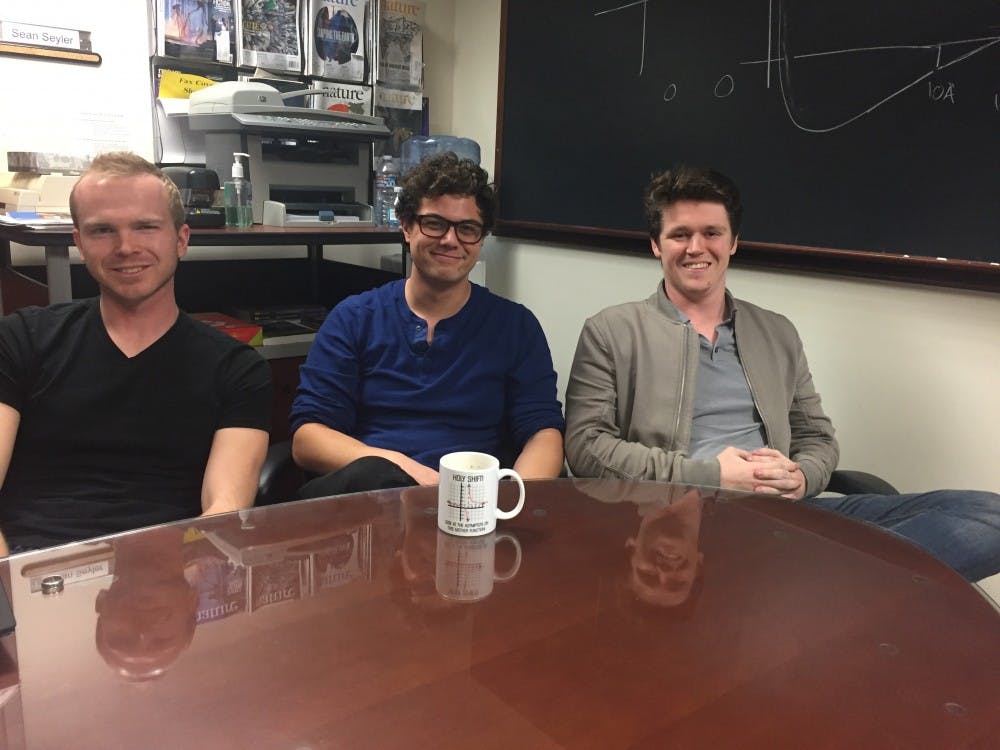ASU researchers test biology in the virtual world using computational biophysics, according to members of one lab.
Oliver Beckstein, principal investigator of the lab, and his team simulate proteins using some of the country’s most powerful computers in the hopes to better understand cell membranes.
“We are using the tools and the approaches of physics to understand biological problems … and we’re using computers to attack these problems,” Beckstein said.
While computing is not taking over experimentation, simulations can discover what experiments cannot, Beckstein said. Still, he said the two work in tandem.
“Computation, experiments and also hardcore theory are basically now the three pillars on which science rests,” Beckstein said.
Using simulations allows the lab to analyze molecules on a more theoretical level, as they are able to see how molecules would behave in environments that would be difficult to observe in reality, he said. The team built these simulations from the ground up, and they model each atom and force in a molecule.
“A protein, you have to imagine, is some sort of blob made from atoms, and these atoms jiggle around,” he said. “But they don’t just jiggle randomly.”
In understanding how these proteins operate, Beckstein said biologists could learn how to combat various diseases.
“The proteins that we are interested in are implicated in diseases like heart disease, autism, epilepsy, for instance,” Beckstein said, adding cancer also uses these proteins.
Despite the ever-increasing performance of computers, this process still has its limits.
“Even though we use some of the biggest computers in the country, this is still slow,” Beckstein said.
It would take 1,000 weeks to simulate just one millisecond of a protein’s activity, he said. Normally, the team models only microseconds, or one thousandth of a millisecond.
David Dotson, a postdoctoral research software engineer and primary systems administrator for Beckstein’s lab, attempts to solve this problem by creatively using many “clusters” of computers, he said.
“What I often spend my time doing is building out software tools and hardware infrastructure to scale out, in a way, where we can run many of these things at once and get a microsecond per day rather than a microsecond a week,” Dotson said.
He achieves this by divvying up the work among different computers all at the same time, Dotson said. Instead of doing this manually, Dotson created programs that do the process for him, thereby creating “automated bureaucrats.”
“A lot of what this infrastructure does is sort of automates the process of sending work to these things and getting it back,” Dotson said.
This sort of bureaucracy can greatly speed up the process and Dotson’s thinking of ways to further improve the system.
“In the near future, we’d like to scale out further by using cloud computing,” Dotson said.
Taylor Colburn, a junior at ASU studying physics, researches the paths proteins take using simulations.
He takes a step-by-step approach and sees if each step produces the intended result, he said.
“Press play on the physics, let the thing wiggle about, and at each step we’ll ask a question,” Colburn said.
By doing the simulations this way, Colburn said he and his fellow researchers save a lot of time and resources.
Reach the reporter at chawk3@asu.edu.
Like State Press on Facebook and follow @statepress on Twitter.




